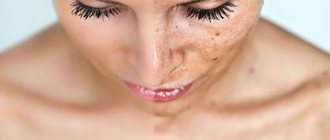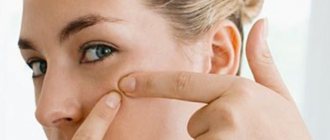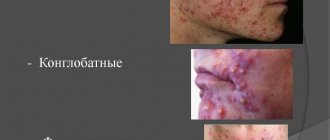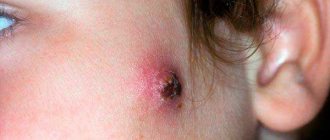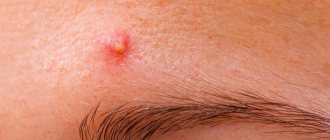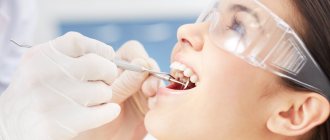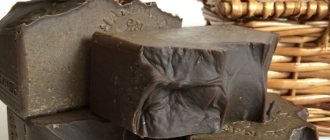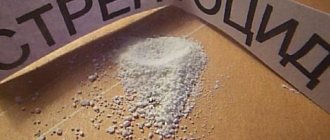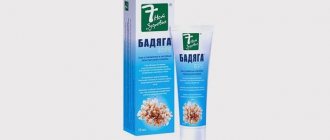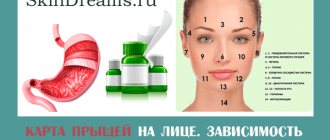It would not be so offensive to have a face covered in pimples if you know that after healing they will not leave marks on the skin. But youthful acne, chicken pox, which “attacked” not in infancy, but much later, furunculosis leave behind not only memories. Spots, scars, potholes, destroying the smooth structure of the skin and making the face less aesthetically pleasing, remain for a long time. And if fresh acne scars on the face can be healed, then by wasting time, a person risks keeping such “decorations” for life.
Laser resurfacing: to whom and when is it indicated ↑
The laser has become the main tool of the cosmetologist. They undergo plastic surgery, hair removal, and treatment of acne scars. To combat acne, two types of laser are used: carbon dioxide and erbium.
Erbium laser capabilities
If the scars are fresh and the skin is young, then the procedure is performed with an erbium laser. It acts gently, does not cause severe pain, and therefore does not require preliminary anesthesia with cream. But “softness” is not a hindrance: after several laser sessions, the scars are compared with the general surface of the skin and no longer show themselves as anything. At the same time, small wrinkles are smoothed out. This laser is also recommended for resurfacing for people with a high sensitivity threshold, because it works in a thin layer of the epidermis where there are no nerve endings. True, the erbium “tool” is not capable of deeper transformations.
Laser resurfacing is not suitable for urgent scar removal, as the recovery period takes about 2 months
Carbon Dioxide Laser Power
A carbon dioxide laser is used to clean the entire depth of the epidermis, as a result of which rapid coagulation of collagen (“comrade” that keeps the skin taut) begins. This tool is capable of removing deep scars after furunculosis, chickenpox and at the same time rejuvenating the skin. But the procedure is painful, and therefore requires preliminary anesthesia with special creams, and in case of increased sensitivity to pain, local anesthesia.
What are we risking?
Both types of laser have contraindications for use, including diabetes, lupus erythematosus, diseases of internal organs, mental disorders and inflammatory processes on the skin in the acute stage.
It should be borne in mind that deep laser (carbon dioxide) can lead to more significant complications. These include age spots, new scars, and sometimes uncontrolled growth of connective tissue, which makes the face look like an immobile mask.
What is the laser resurfacing procedure?
- After a preliminary consultation with a cosmetologist, the patient is prescribed various creams to improve the condition of the skin. If you have acne or herpes, you will have to take medications that fight the infection. And only when the skin becomes absolutely healthy, the doctor will be able to resurface it.
- Before the procedure, the cosmetologist applies an anesthetic cream, and if the area of problem skin is large, then local anesthesia is administered.
- Laser resurfacing lasts about an hour depending on the depth of the scars and their number.
- After the procedure, the skin is lubricated with a protective ointment, which will protect the affected cells from infection and various types of injuries.
- For two weeks, the face will be swollen, red and painfully responsive to natural factors. Redness can last for about 2 months.
- You will be able to see the renewed skin in all its glory only after 2 months.
You will have to walk around with this face for about two weeks, or even more.
Fractional photothermolysis: “showdown” with scars without pain ↑
Those who are looking for a way to remove acne scars painlessly should try the fractional photothermolysis procedure. Under the terrifying name lies the same laser resurfacing, but of a new generation. The device with which the procedure is carried out acts on the skin not with a spot of a laser beam, but with a beam in which more than a hundred microbeams are involved. The second name for fractional photothermolysis is microperforation. This method does not require careful preparation of the skin and does not have as many contraindications as the previous procedure.
What happens in cells during the procedure
Micro-rays, penetrating into cells, simultaneously burn out old layers and cause rapid division of new ones. Doctors called this double cosmetological effect “the emergence of microthermal treatment zones.” The cell begins to actively divide because the laser “awakens” fibroblasts (these are the main “suppliers” of skin elasticity, producing hyaluronic acid, collagen and elastin). At the same time, the patient is relieved of the pain that accompanies traditional laser resurfacing.
The effectiveness of fractional photothermolysis in the fight against acne
Acne leaves behind a “bouquet of consequences”: scars, spots, enlarged pores, ruts and pits in the skin. Microperforation easily combats all problems, removing them comprehensively. At the same time, not only fresh scars, but also those with many years of limitation can be treated with laser.
The sooner you start fighting scars, the better the end result.
To see changes, it is enough to carry out 2 procedures, after which the depth and area of the scars are reduced and redness is removed. But the standard course is 3-6 sessions, depending on the level of “deterioration” of the skin.
Patient sensations during and after microperforation
Fractional photothermolysis does not require anesthesia. The impact of the laser beam is perceived as pinpoint, gentle tingling with a needle. Most patients tolerate them well. For those who have hypersensitivity to pain (even a tooth cannot be treated without novocaine!), cosmetologists lubricate the problem area with anesthetic cream. One session lasts about half an hour.
For two or three days, the face will be slightly swollen and red, and the scars will be red with a white edge.
Features of the recovery period
In fact, the rehabilitation period comes down to those 2-3 days when the skin looks slightly reddened. The face does not require specific care. It is enough just to systematically moisturize the skin with products recommended by your doctor and avoid direct sunlight for a month.
Mesotherapy: “prick up” scars after acne with injections ↑
Those who do not have a panic fear of a medical syringe can try the effectiveness of mesotherapy for themselves. This procedure helps remove acne scars with vitamin injections. The syringe needle penetrates the dermis layer and delivers a complex of amino acids, vitamins, enzymes and other additives directly to the points where scars occur, bypassing the epidermis layer. The problem with ointments, creams, and gels is that most of the active substances are not able to break through the layer of dead cells and reach the dermis. Injections “go away” from this problem, penetrating precisely into the target. In addition to the healing effect on post-acne and other scars, vitamin cocktails saturate the skin with moisture, the lack of which causes the aging process.
The needle has a targeted effect, delivering a therapeutic cocktail only to the scar area
How effective is this remedy for acne scars?
Since the therapeutic cocktail gives the cells nutrition from the outside without forcing them, for example, to produce hyaluronic acid on their own, the effect of the injections is temporary. After two weeks, the therapeutic component is completely absorbed, and in order for the face to “keep its shape”, a second injection is required. It is recommended to undergo a course of mesotherapy at least once every six months.
What kind of troubles can you expect from injections?
- Injections are a very painful moment, especially for the face and neck area.
- Insertion of a needle can cause swelling, swelling and even hematomas.
- If sterility is violated, there is a possibility of infection.
Unsuccessful needle insertion can lead to extensive hematomas
In what cases should you use mesotherapy?
The visual effect of reducing acne scars is noticeable within a couple of days, so cocktail injections can be called a kind of “emergency cosmetic aid.” If you need to look perfect for some kind of celebration, and you have a week or two to prepare, then only mesotherapy will provide such a quick cosmetic effect.
Is it possible to undergo a course of mesotherapy without injections?
It turns out that the dermis can receive a healing cocktail without unpleasant injections. For this purpose, special devices have been created that apply electric current and ultrasound to the stratum corneum of the epidermis. The skin, under the action of the device, opens channels through which therapeutic cocktails penetrate into the deeper layers. As a result, the patient receives the required dose of active substances without pain or risk of infection. Swellings and hematomas are also excluded.
Needle-free mesotherapy eliminates scars only temporarily, but the procedure is pleasant and painless
But it should be borne in mind that the effectiveness of needle-free mesotherapy is also temporary, and frequent visits to the cosmetology office are required to maintain an even facial structure.
What is Yam ointment?
Yam ointment was developed as a veterinary drug with acaricidal and fungicidal properties and is intended for external treatment of pets against tick-borne dermatitis, eczema, and trichophytosis. But due to the drug’s ability to significantly suppress the activity of subcutaneous mites, including Demodex, and without causing significant damage to the skin, many dermatologists recommend Yam ointment for demodicosis to their patients.
Yam ointment for demodicosis
The product is purchased at veterinary pharmacies; you are unlikely to find it in regular pharmacies. The fact that Yam ointment was not originally intended for people should not be alarmed. On the contrary, external products for animals require licking of the drug, so they are carefully tested for toxicity so that the pet does not get poisoned.
Yam ointment is similarly harmless to warm-blooded animals, including humans, so people can be treated with it without fear - the drug is assigned the lowest, fourth, toxicity class, and the composition is devoid of aggressive components.
However, its use implies an algorithm prescribed by the instructions, taking into account the order, frequency and precautions during application, as well as contraindications. Therefore, you should definitely read the instructions before starting treatment.
Note! Yam ointment is not an everyday cream with a therapeutic effect, it is a complete, complex composition, medical product that requires compliance with the instructions. Indiscriminate application of the product will have a negative effect rather than the expected positive effect.
“Dissolving” acne scars: how to get rid of blemishes using chemical peeling ↑
Skin renewal is constantly hampered by the top layer of dead cells that chemical peeling is designed to combat. It is in the epidermis that most acne scars are located, and if you somehow remove the old skin, like a mask, then the problem areas will be removed along with it. This is what cosmetologists do when they apply various acids to the face. The purpose of chemical peeling is to dissolve the stratum corneum in acids. To eliminate the effects of acne, it is enough to carry out superficial peeling. This is a gentle procedure that affects only the outer layers of the skin. New cells with an even structure will replace the exfoliated old cells, and acne marks will disappear.
Superficial peeling, unlike deep peeling, is rarely accompanied by side effects, because it only affects the dead layer of cells.
Your own cosmetologist
If the pits after acne on the face are not too deep and numerous, then you can try to remove them at home. We will now find out how to do this. First of all, make sure that there are no fresh inflammations on the skin. In this case, scar treatment will have to be postponed. The next thing you need is to regularly do masks and facial peels. Here are some useful recipes:
- Mix Vishnevsky ointment in equal proportions with honey and alcohol. The resulting mixture should be applied directly to the scars for 40 minutes every day. You will need at least 20 procedures for the results to become noticeable.
- Bodyagi mask is a very popular remedy. Combine bodyaga powder, lemon juice and tea tree oil to a thick paste. Apply the mask for 10–15 minutes.
- An effective cream is obtained by mixing sandalwood powder with rose water. It is applied all over the face and left overnight.
- Clay masks are also great for fighting post-acne. Take 2-3 tsp. green clay, add a couple of drops of rosemary oil and a little water. The mixture should be easy to apply. You need to keep this mask on problem areas for 15–20 minutes.
